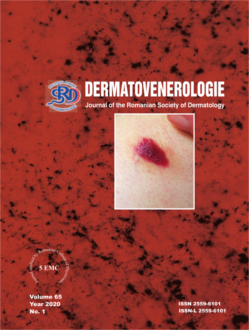Post-translational modifications (methylation, phosphorylation,
glycosylation, acetylation) of proteins play
an important role in controlling cellular processes.
Methylation of protein-embedded arginine results in the
formation of monomethyl arginine (MMA), symmetrical
dimethylarginine (SDMA) and asymmetrical dimethylarginine
(ADMA). The accumulation of ADMA and
MMA in cells and in the blood stream has been associated
with various pathological conditions, while SDMA has
been regarded as a physiologically inert compound. Today it
is proven that SDMA inhibits the production of NO by
blocking the cellular uptake of L-arginine. In the present
study, we have shown that the level of SDMA is
significantly increased in patients with venous leg ulcer (17
cases), compared to the control group (15 cases). It should
be noted that this is the first study examining serum
variations of SDMA in dermatological conditions. In
conclusion, our data show that SDMA may contribute to
the pathophysiology of venous leg ulcer.
Original articles
Symmetrical dimethylarginine (SDMA) and venous ulcer of the lower limbs


